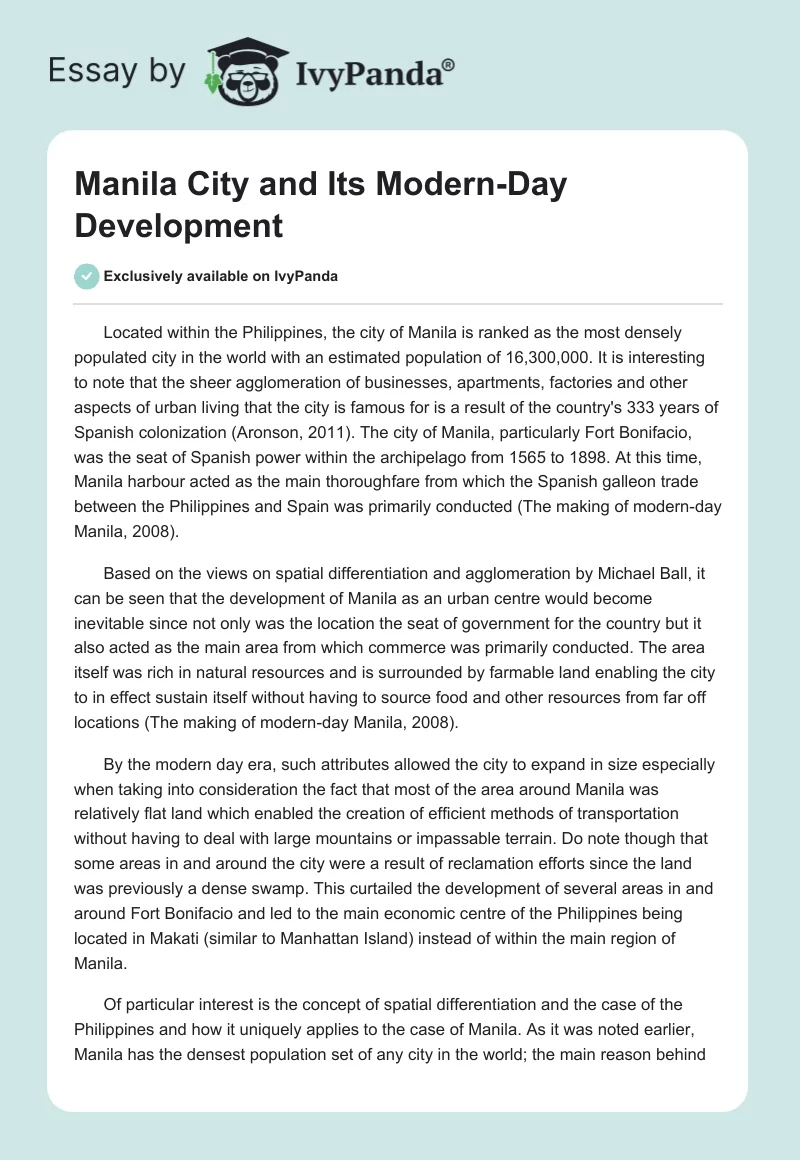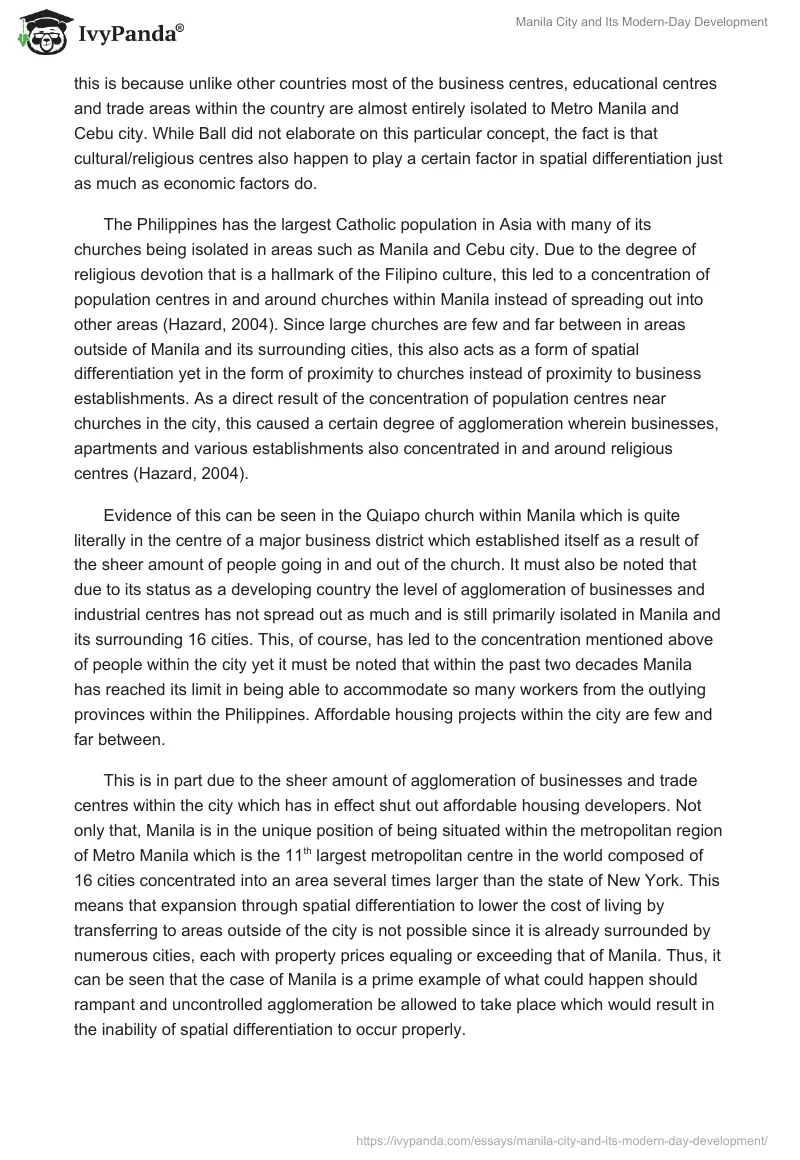Located within the Philippines, the city of Manila is ranked as the most densely populated city in the world with an estimated population of 16,300,000. It is interesting to note that the sheer agglomeration of businesses, apartments, factories and other aspects of urban living that the city is famous for is a result of the country’s 333 years of Spanish colonization (Aronson, 2011). The city of Manila, particularly Fort Bonifacio, was the seat of Spanish power within the archipelago from 1565 to 1898. At this time, Manila harbour acted as the main thoroughfare from which the Spanish galleon trade between the Philippines and Spain was primarily conducted (The making of modern-day Manila, 2008).
Based on the views on spatial differentiation and agglomeration by Michael Ball, it can be seen that the development of Manila as an urban centre would become inevitable since not only was the location the seat of government for the country but it also acted as the main area from which commerce was primarily conducted. The area itself was rich in natural resources and is surrounded by farmable land enabling the city to in effect sustain itself without having to source food and other resources from far off locations (The making of modern-day Manila, 2008).
By the modern day era, such attributes allowed the city to expand in size especially when taking into consideration the fact that most of the area around Manila was relatively flat land which enabled the creation of efficient methods of transportation without having to deal with large mountains or impassable terrain. Do note though that some areas in and around the city were a result of reclamation efforts since the land was previously a dense swamp. This curtailed the development of several areas in and around Fort Bonifacio and led to the main economic centre of the Philippines being located in Makati (similar to Manhattan Island) instead of within the main region of Manila.
Of particular interest is the concept of spatial differentiation and the case of the Philippines and how it uniquely applies to the case of Manila. As it was noted earlier, Manila has the densest population set of any city in the world; the main reason behind this is because unlike other countries most of the business centres, educational centres and trade areas within the country are almost entirely isolated to Metro Manila and Cebu city. While Ball did not elaborate on this particular concept, the fact is that cultural/religious centres also happen to play a certain factor in spatial differentiation just as much as economic factors do.
The Philippines has the largest Catholic population in Asia with many of its churches being isolated in areas such as Manila and Cebu city. Due to the degree of religious devotion that is a hallmark of the Filipino culture, this led to a concentration of population centres in and around churches within Manila instead of spreading out into other areas (Hazard, 2004). Since large churches are few and far between in areas outside of Manila and its surrounding cities, this also acts as a form of spatial differentiation yet in the form of proximity to churches instead of proximity to business establishments. As a direct result of the concentration of population centres near churches in the city, this caused a certain degree of agglomeration wherein businesses, apartments and various establishments also concentrated in and around religious centres (Hazard, 2004).
Evidence of this can be seen in the Quiapo church within Manila which is quite literally in the centre of a major business district which established itself as a result of the sheer amount of people going in and out of the church. It must also be noted that due to its status as a developing country the level of agglomeration of businesses and industrial centres has not spread out as much and is still primarily isolated in Manila and its surrounding 16 cities. This, of course, has led to the concentration mentioned above of people within the city yet it must be noted that within the past two decades Manila has reached its limit in being able to accommodate so many workers from the outlying provinces within the Philippines. Affordable housing projects within the city are few and far between.
This is in part due to the sheer amount of agglomeration of businesses and trade centres within the city which has in effect shut out affordable housing developers. Not only that, Manila is in the unique position of being situated within the metropolitan region of Metro Manila which is the 11th largest metropolitan centre in the world composed of 16 cities concentrated into an area several times larger than the state of New York. This means that expansion through spatial differentiation to lower the cost of living by transferring to areas outside of the city is not possible since it is already surrounded by numerous cities, each with property prices equaling or exceeding that of Manila. Thus, it can be seen that the case of Manila is a prime example of what could happen should rampant and uncontrolled agglomeration be allowed to take place which would result in the inability of spatial differentiation to occur properly.
Reference List
Aronson, J. (2011). Manila. Our World: Philippines, 7.
Hazard, E. (2004). Nation Building and the Crafting of a Useable Past in the Philippines. Conference Papers — International Studies Association, N.PAG.
The making of modern-day Manila. (2008). Geographical (Geographical Magazine Ltd.), 80(11), 72.


